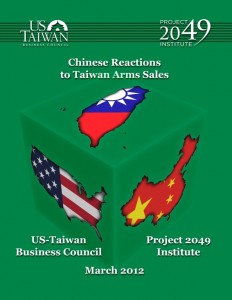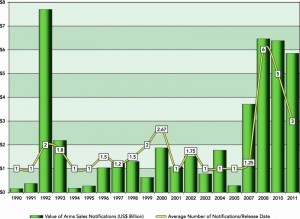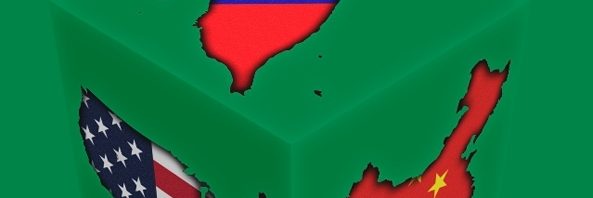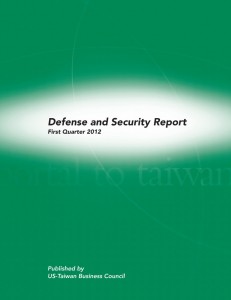
Taiwan’s national security is fundamentally in the national interest of the United States, and the U.S. seeks to create an atmosphere conducive to a peaceful and non-coercive resolution of political differences on the two sides of the Taiwan Strait.
U.S. arms sales are intended to provide Taiwan’s government and leadership with the confidence needed to engage with their counterparts in Beijing from a position of strength. Guided by the Taiwan Relations Act, and consistent with understandings outlined in Joint Communiqués with China, America providing to Taiwan the arms necessary to ensure its own self-defense has enabled democracy to flourish on the island. Substantial support for Taiwan has also served as a visible reminder of U.S. commitments to peace and security in the Asia Pacific.
The process by which U.S. policymakers have addressed Taiwan’s defense requirements has evolved over time. When the Mutual Defense Treaty guided the relationship, between 1955 and 1979, Taiwan was treated as an ally. After the shift in diplomatic relations in 1979, Taiwan was treated as a special case. Concerned over possible Chinese intervention, Taiwan defense officials traveled to Washington to present senior U.S. policy officials with Taiwan’s bundled list of requirements in annual face-to-face meetings. Formal Congressional notifications of approved items were forwarded both relatively frequently and as needed throughout the course of a given year.
In 2001, the annual Taiwan arms sales talks process was discontinued, with the intention of allowing Taiwan’s defense requirements to be addressed at any time during the year, similar to the process for a normal security assistance partner. Since 2008, however, Congressional notifications of approved items have consistently been bundled into large multi-billion dollar packages, rather than being processed when ready. A return to the annual arms sales talks process may warrant consideration.

China has a well-established track record of responding negatively and stridently to public announcements of U.S. arms sales to Taiwan. Congressional notifications will likely remain the primary trigger for Chinese responses, rather than earlier decision-points in the process such as providing Price and Availability (P&A) data in response to a Letter of Request (LOR) from Taiwan.
Future Chinese actions taken in response to Taiwan arms sales may include sanctions against the U.S. companies that are supporting Foreign Military Sales (FMS) programs or undertaking Direct Commercial Sales (DCS) programs with Taiwan. However, the effectiveness of such sanctions is open to question, as major U.S. defense industrial firms conduct only minor business in China. Beijing is also unlikely to sanction smaller sub-system suppliers due to their peripheral involvement as sub-contractors and their marginal value as symbolic targets. In addition, if a U.S. company were to face discrimination as a result of Chinese sanctions due to Taiwan arms sales, a case could be introduced to the World Trade Organization (WTO) for adjudication.
Beijing authorities could suspend People’s Liberation Army (PLA) military exchanges with the U.S. Department of Defense in response to Taiwan arms sales – an often-used tactic. While such exchanges have value, critical issues in the bilateral security relationship would be addressed through other channels if necessary. In addition, the PLA most likely would resume exchanges again, following an appropriate interval, as they have in the past.
In retaliation for Taiwan arms sales, PRC leaders could also consider releasing sensitive nuclear or missile-related technologies to Iran or other countries of concern, or they could withhold support for non-proliferation-related actions within the United Nations or other international organizations. However, reprisals from the U.S. or from other concerned countries could be expected in return, and Beijing likely would also be subject to criticism from other players in Europe and elsewhere who have significant interests in preventing Iran from gaining weapons of mass destruction.
Political or military leaders in Beijing may attempt to retaliate by liquidating U.S. Treasury holdings. As satisfying an emotional outburst as this course of action might be on an individual basis, the PLA has limited authority over national Chinese economic and financial policy. A sudden sell-off of U.S. Treasury holdings would be a significant horizontal and vertical escalation of the relatively minor, albeit emotionally charged, issue of Taiwan arms sales. In addition, the effects of such an action are unclear and could actually have a greater negative effect on China’s economic interests than on the interests of the U.S.
Past behavior indicates that China is unlikely to challenge any fundamental U.S. interests in response to any future releases of significant military articles or services to Taiwan. The U.S. therefore retains considerable freedom of action in abiding by the Taiwan Relations Act. Barring a substantive reduction in the Chinese military posture opposite Taiwan, the U.S. will likely continue to provide Taiwan with weapons of a defensive character for the foreseeable future.
Nevertheless, key unresolved issues include Taiwan’s unheeded request for additional F-16 fighters, and the fact that the Bush administration’s 2001 commitment to assist Taiwan in its acquisition of diesel-electric submarines remains unfulfilled. Taiwan’s request for additional F-16s is both reasonable and urgent, and should be honored. In addition, if Congressional notification for a submarine design program is not forthcoming, Taiwan’s LOR should be withdrawn and export licenses through direct commercial sales channels should be given positive treatment.
The Barack Obama administration has demonstrated unnecessary restraint in its Taiwan arms sales decisions to date, despite having ample justification for positive considerations. Excessive caution on new arms sales to Taiwan risks legitimizing PRC use of military coercion to resolve political differences with its neighbors and sends a signal to others in the region of a diminished U.S. commitment in Asia.
This major report examining Chinese reactions and retaliatory responses to Taiwan arms sales by the U.S. is available on the US-Taiwan Business Council website:
Report: “Chinese Reactions to Taiwan Arms Sales” (PDF, 2.18MB)
Graphic: Report Cover
Graphic: Value of Arms Sales Notifications, 1990-2011


